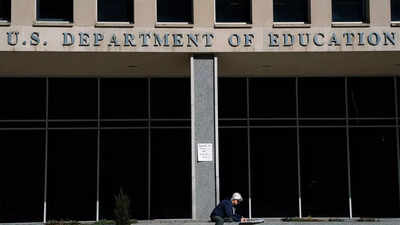Special education staff slashed in US Department of Education layoffs: Here’s why students and schools are at risk

When Education Secretary Linda McMahon announced in May that improving literacy through evidence-based practices would be a top priority, the small team at the U.S. Department of Education’s Office of Special Education Programs (OSEP) saw an opportunity to align their initiatives with a shared goal: boosting achievement for all students by the end of third grade.But that ambition collided with a harsh reality. Nearly half of the Education Department’s staff had already been cut through layoffs and buyouts by March. Though OSEP initially escaped the worst, continued reductions — including the recent governmentwide reduction-in-force during the federal shutdown — have left the office’s remaining 20 or so employees among the approximately 466 staffers facing termination, Education Week reports.“Staff always try to align our work with whatever the priorities are of the secretary of the administration. And we could have done things together on that very issue, but we got the rug pulled out from under us,” an OSEP staffer overseeing research and grants told Education Week.
Cuts ripple across multiple offices
The reductions extend far beyond special education. Six of the agency’s 17 offices are being pared down, affecting teams that manage civil rights investigations, K-12 and higher education grants, and services for students with disabilities or experiencing homelessness. Yet the scope of these reductions remains opaque. Furloughed employees have been instructed not to check work emails, leaving some uncertain if they or their colleagues will keep their positions, Education Week reports.For programs that rely on specialized staff, the implications are immediate. Without personnel to administer grants, the government may be able to distribute funds but will struggle to provide oversight or guidance. Josie Skinner, a former Education Department lawyer, told Education Week, “I don’t see how you can make the argument that this is not a dismantling of these offices.”
Special education and civil rights on the line
The layoffs could effectively dismantle OSEP, leaving fewer than five employees to manage a program that once had 80 to 90 staffers. Cuts to the Office for Civil Rights (OCR) have already halved its workforce, shrinking its 12 regional offices to just five, with only 120 staff remaining. Catherine Lhamon, former assistant secretary of civil rights, told Education Week, “OCR could not afford any cuts, period, and needed desperately to add staff because of the quantum of harm in schools with respect to civil rights and the many, many thousands of cases coming into the office.”Even for programs with decades of bipartisan support — literacy, mental health, charter schools — the reductions threaten to stall or erase progress. Without staff to ensure compliance, enforce civil rights protections, and guide school districts, federal mandates risk becoming hollow. “If there are not people there to make sure the laws are followed, the laws are meaningless,” Skinner said to Education Week.
Grants and programs face uncertainty
Federal employees managing grants do more than allocate funds. They advise districts on compliance, help schools maximize resources, and collect data to inform future programming. Amanda Karhuse of the National Association for Music Education says, “Without nudging from staffers…many school districts and state agencies wouldn’t have known they’re allowed to spend Title I formula funds on arts education initiatives,” Education Week reports.Currently pending grants, such as the $270 million allocated for school-based mental health services, face uncertainty. Kayla Patrick, a senior fellow at the Century Foundation, told Education Week, “Even if and when this shutdown ends, there’s no one to do that work.”
The uncertain future for students and schools
Some affected employees have already sought alternative work, while others hope congressional or judicial intervention might save their positions. But even if reinstated, the loss of institutional knowledge and the disruption to programs could have lasting effects on students, educators, and districts nationwide.The Education Department has shrunk from over 4,100 employees in January to roughly 2,400, with another 20% potentially gone if current layoffs proceed, Education Week reports. The result, staff warn, could be a federal education system unable to enforce its own laws, manage grants, or support students with specialized needs.For an agency tasked with upholding civil rights, promoting equity, and guiding the nation’s schools, the stakes could not be higher.






